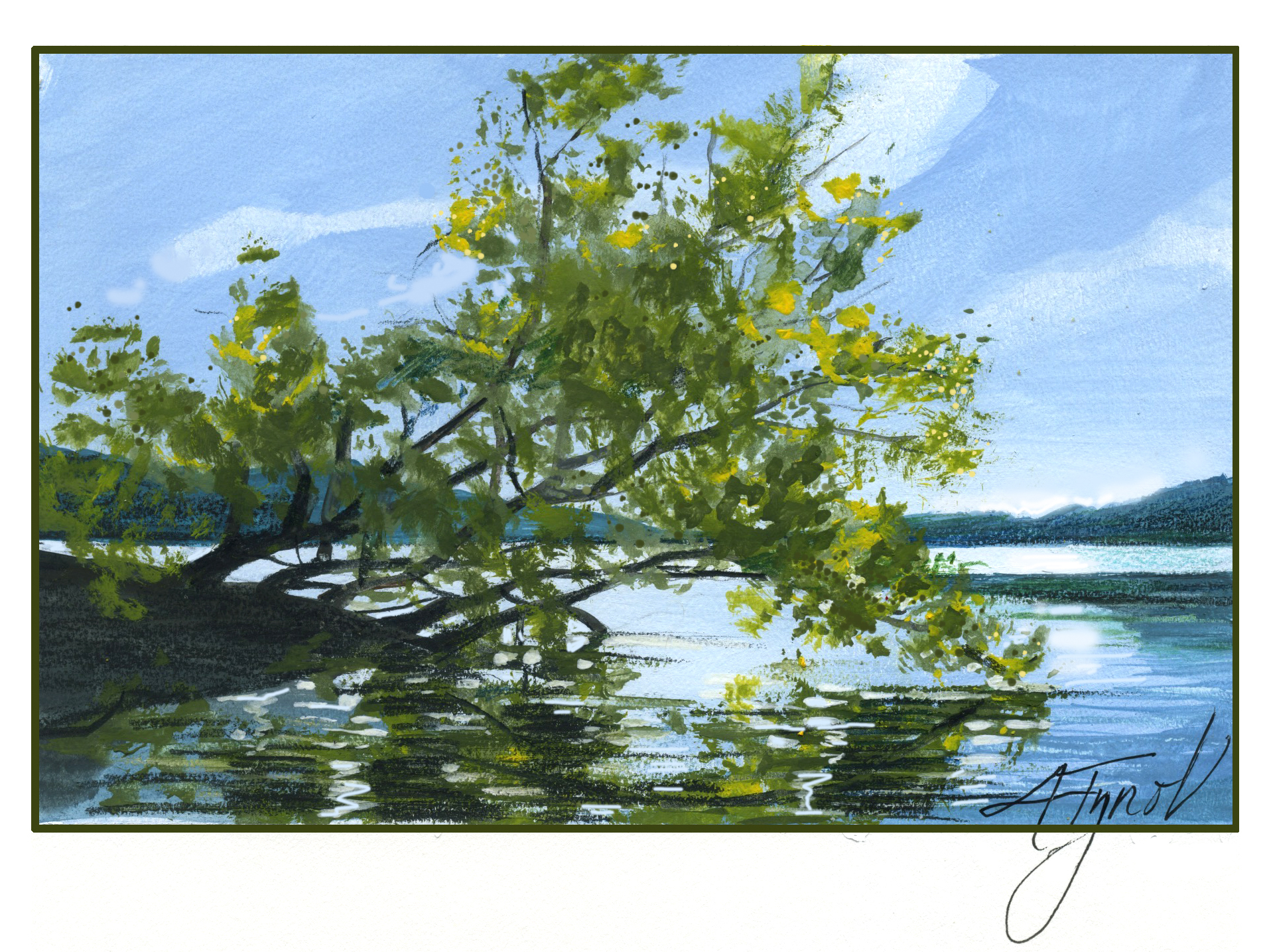I often spot black willow trees as I’m kayaking along a riverbank or lakeshore. While perhaps less picturesque than its (non-native) cousin the weeping willow, black willow is native to the Northeast and provides a host of ecological benefits.
Willow trees are in the Salix genus, along with pussy willow and more than 20 other species of woody plants native to our region. Black willow (Salix nigra) grows throughout the eastern U.S., as far north as New Brunswick in Canada and as far south as Florida and Texas.
By habitat and appearance, black willow is not hard to identify. The species generally grows in wet areas, including along rivers and in floodplains. Its dark gray bark, which gives the tree its name, is rough with deep fissures, and on older trunks can become shaggy. Many black willow trees have multiple stems growing from a single trunk. The lance-shaped leaves grow up to 6 inches long, with finely serrated margins.
“Black willows are short-lived and fast-growing, most often found along river and stream banks where light is more favorable,” said New Hampshire State Botanist William Nichols. In areas that feature ideal growing conditions, such as in the Mississippi River Valley, specimens often grow over 100 feet tall. In New England, black willow is one of the common species in floodplain forests such as those near Lake Champlain and grows up to 60 feet tall.
All willows have high wildlife value, and black willow is no exception. Its flowers provide one of the earliest spring sources of nectar and pollen for insects, including honey bees. Birds eat the catkins and buds, and the leaves are a larval host for hundreds of butterfly and moth species, including tiger swallowtail, mourning cloak, and viceroy butterflies. Deer, muskrats, beavers, rabbits, and other animals eat the twigs. Some species of ducks and woodpeckers nest in the trees’ soft trunks.
Renowned New Hampshire naturalist David Carroll has a special love for these trees. His book “Trout Reflections” includes a drawing of several black willow trunks that form a dam, providing cover for turtles, brook trout and other aquatic species.
“Quite massive sections go down along the banks of streams and other waterways and are particularly beneficial for wood turtles, which spend most of their active season terrestrially,” Carroll said. “The trunk and branch sections often retain a connection with the roots, and the fallen logs sprout linear ‘forests’ that rise from the prone blowdowns. Fallen trunks can generate sprouts for years. Wood turtles eat willow leaves, and I wouldn’t be surprised if painted turtles and snapping turtles did the same, since both eat a lot of plant material.”
For humans, one of the black willow’s most attractive features is its yellow-gold fall foliage. But people have recognized the tree’s more practical value for generations. The bark contains salicylic acid, which is now produced synthetically to make aspirin. Historically, the wood was used to make artificial limbs, and it is still used to make baskets, furniture, and cabinets, among other items. While weak in a structural sense, the wood is light, sturdy, shock-resistant, and not prone to cracking.
The black willow’s greatest value to modern humans, however, is perhaps as bioengineering tool. Its spreading, fibrous roots soak up water like big sponges, making it a great choice for stabilizing streambanks and restoring riparian forest buffer zones. It even improves the soil for other plants by sucking up pollutants such as lead, cadmium, and copper, a process called phytoremediation.
Autumn beauty, wood duck apartment, pollinator buffet, and erosion control powerhouse: that’s a lot for one tree to lay claim to, but black willow does it all.
Laurie D. Morrissey is a writer who lives in Hopkinton, New Hampshire. Illustration by Adelaide Murphy Tyrol. The Outside Story is assigned and edited by Northern Woodlands magazine and sponsored by the Wellborn Ecology Fund of New Hampshire Charitable Foundation: nhcf.org.




